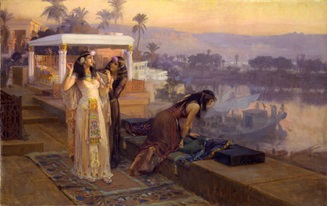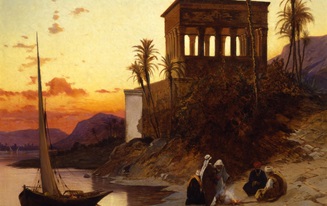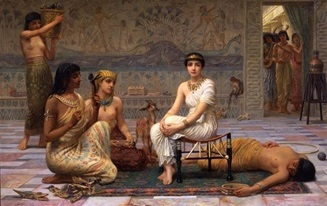For centuries, Egypt’s pyramids, temples, pharaohs, and hieroglyphics were tantalizing but dimly known in the West. Napoleon’s militarily disastrous expedition to Egypt in 1798, however, created the first major artistic and scholarly study of that country with the publication of the encyclopedic Description de l’Égypte (1809–29). Writers, curious travelers, scholars and, most crucially, artists from many European countries followed and explored all aspects of its culture; Egypt’s Pharaonic, Ptolemaic, Classical, and Islamic history was finally revealed.
Ancient Egypt & the Napoleonic Era tells the story of the artistic legacy of Napoleon’s Egyptian expedition (1798–1801) that inspired a wave of artists trained in the finest art academies in Paris, London, Rome and other international venues, where they learned the visual and technical acuity that characterizes academic art. Drawn from the rich collection of the Dahesh Museum of Art, the exhibition highlights vivid 19th-century Orientalist views by European and American artists, including Frederick Arthur Bridgman, Hermann David Salomon Corrodi, and Edwin Longsden Long, as well as superlative contemporary engravings from the Description de l’Égypte, a publication that transformed the study of Egypt. The exhibition demonstrates the ubiquity of the Orientalist phenomenon in its inclusion of works of art in a wide range of techniques, from salon paintings (seen in exhibitions by a wide public) to popular prints.





